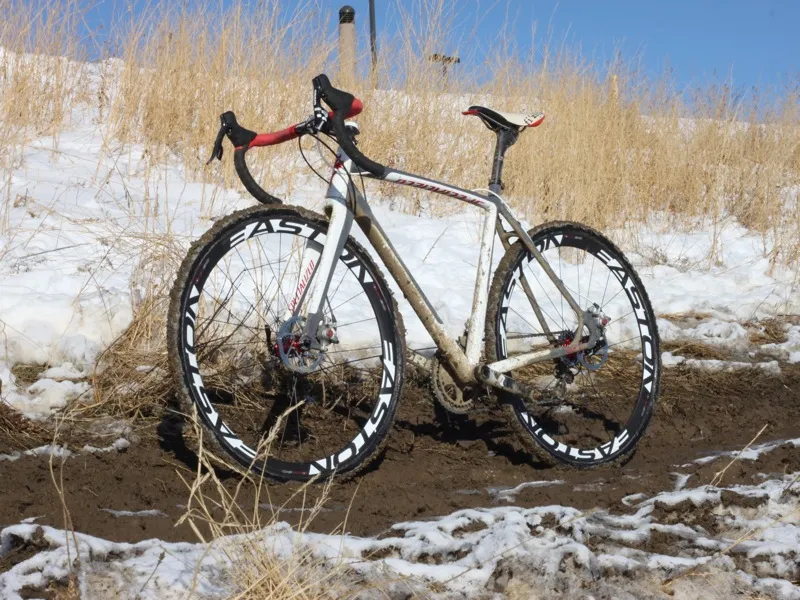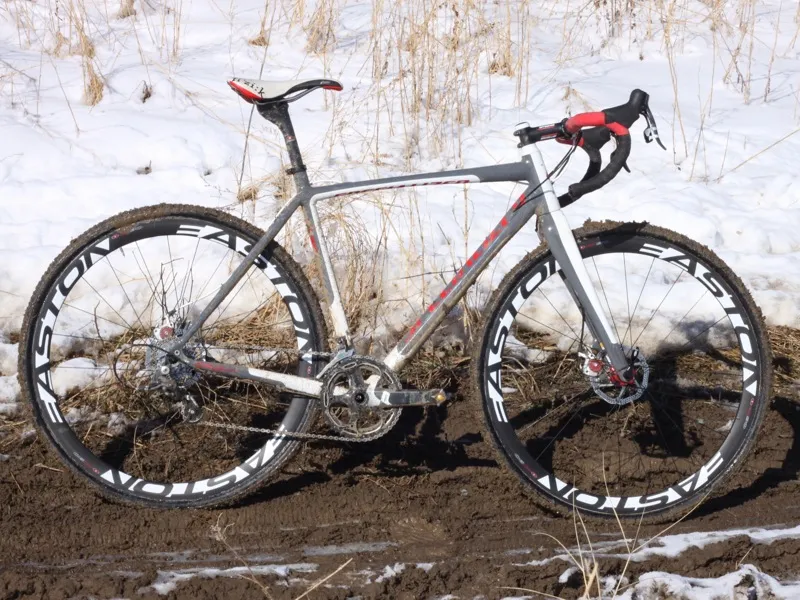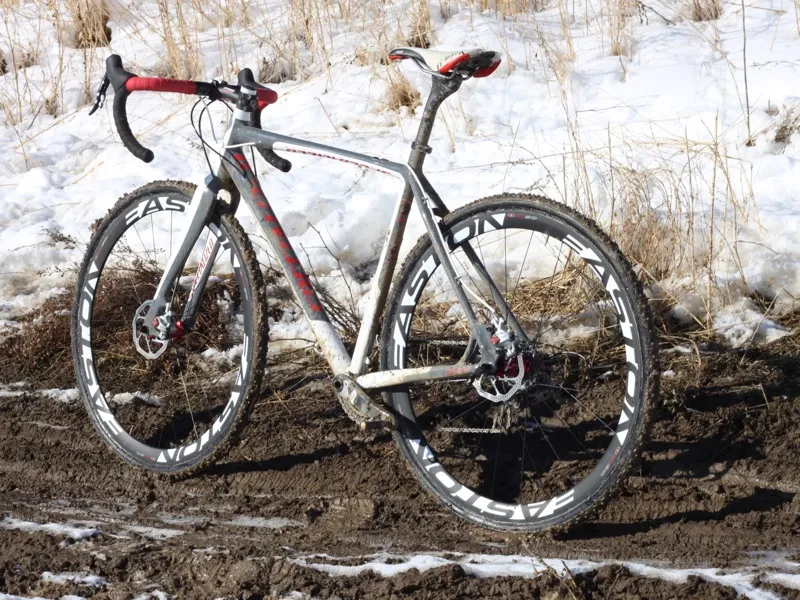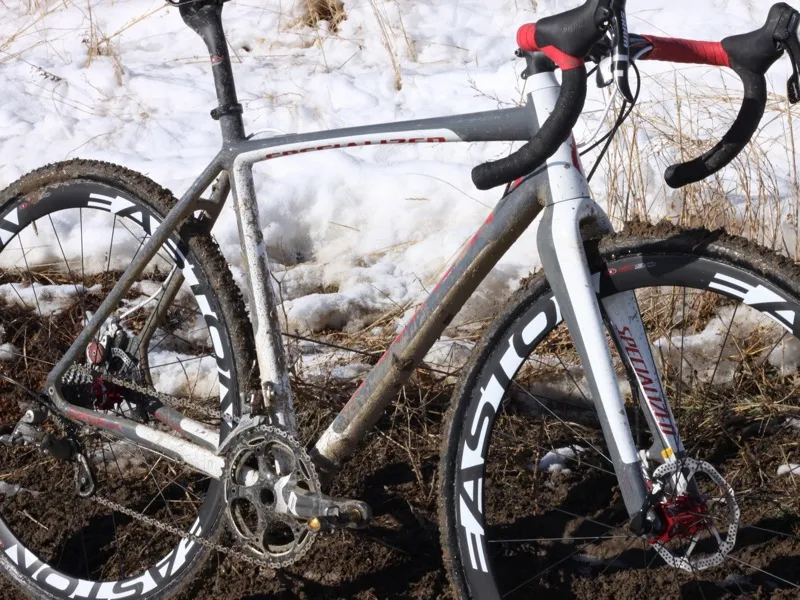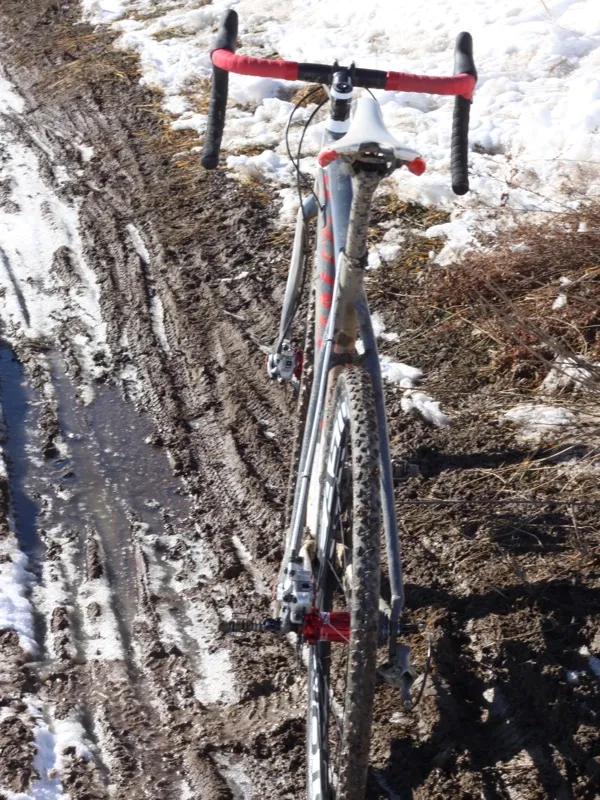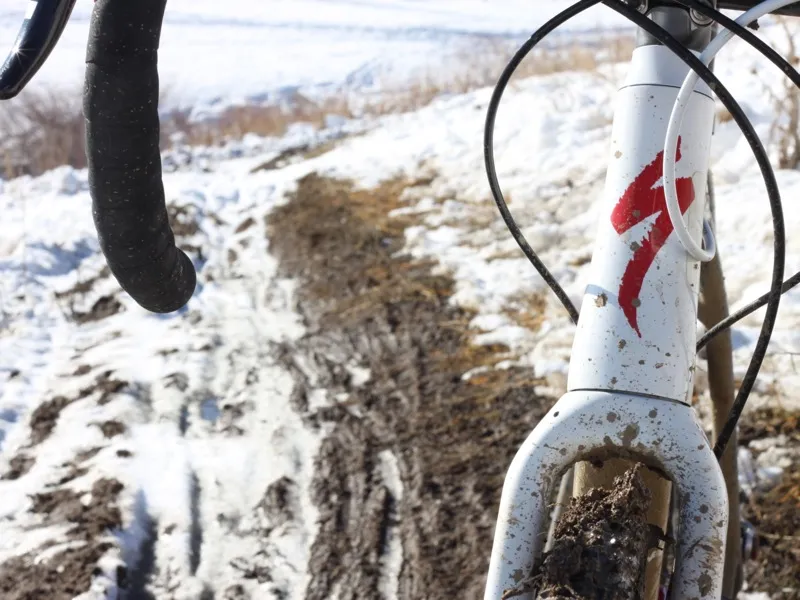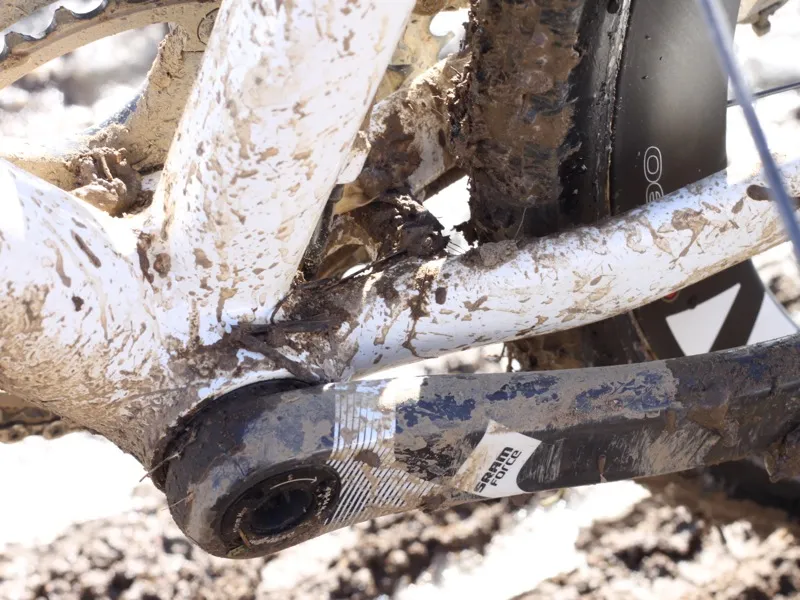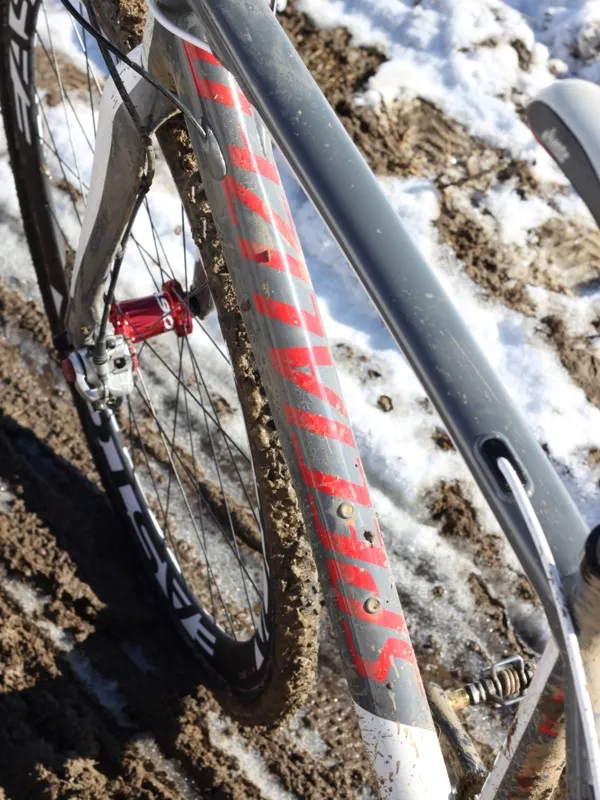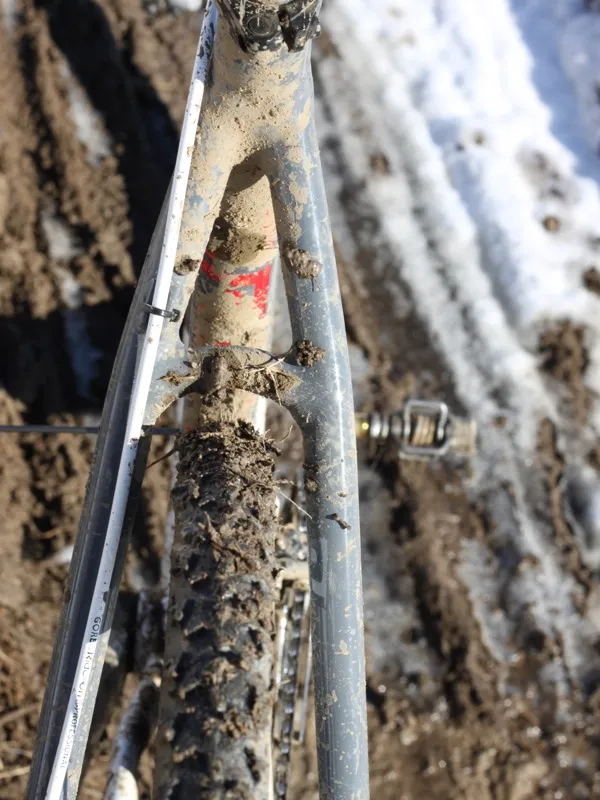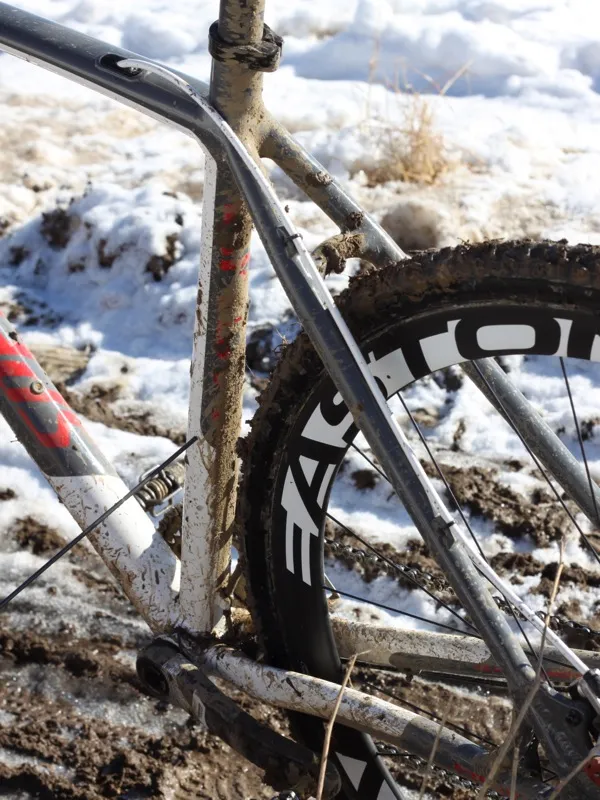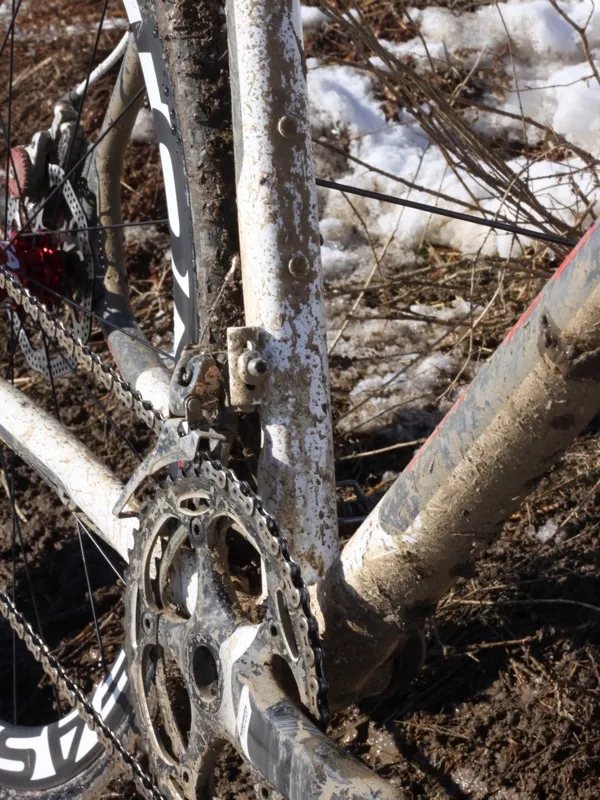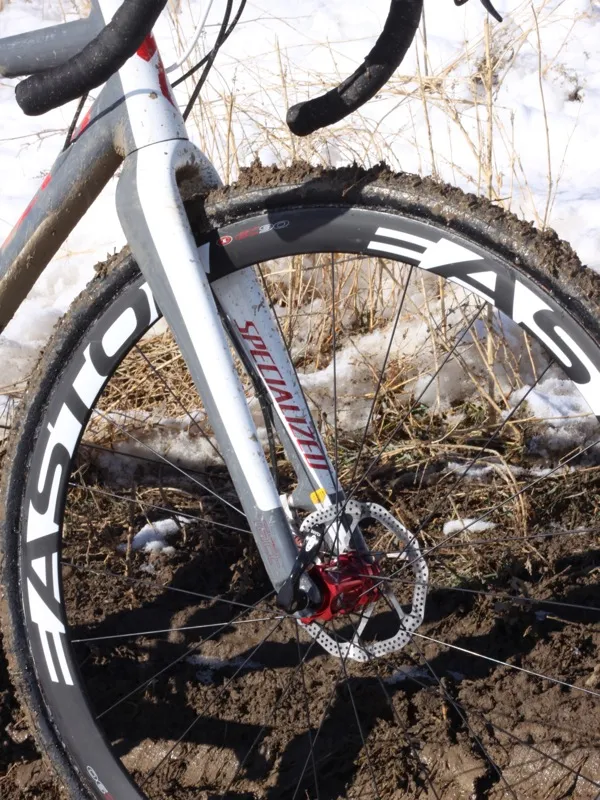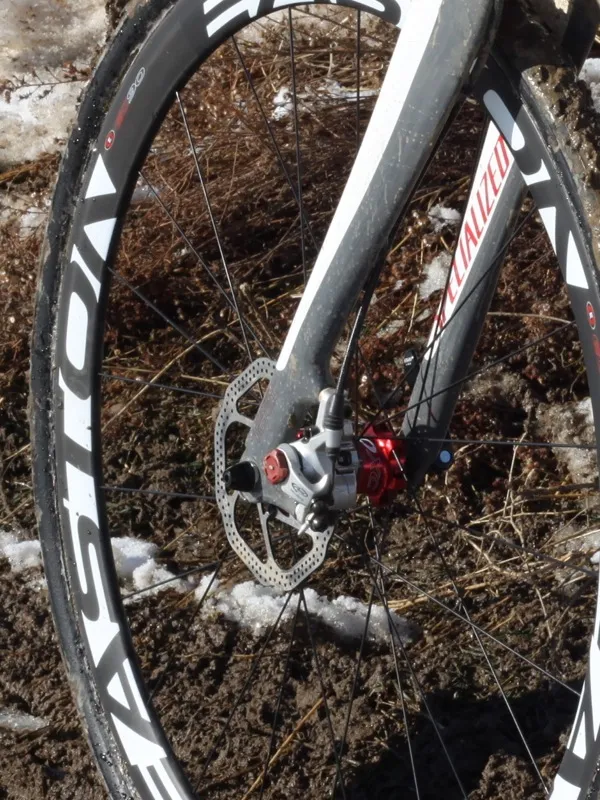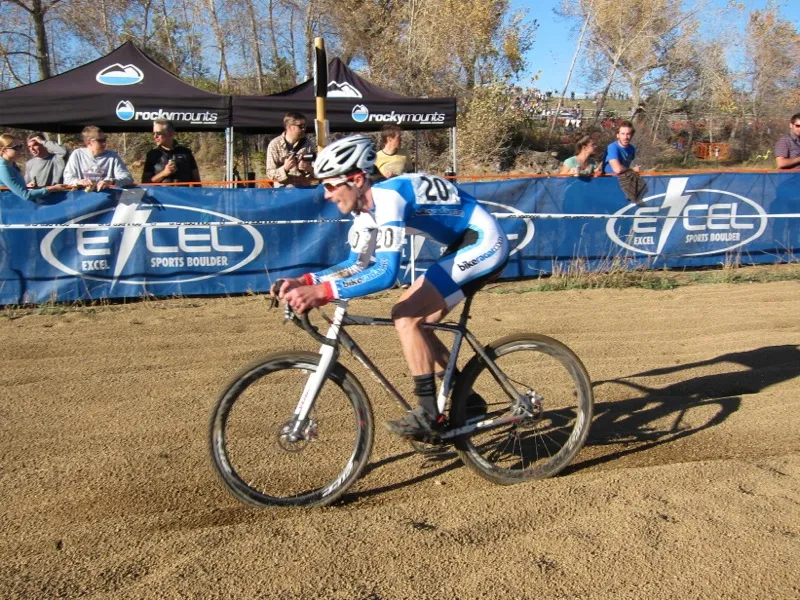Here at BikeRadar we've been following the development of disc brakes for cyclo-cross closely. We decided we should spend a full season on discs before the big component manufacturers went and made them a no-brainer for racing by making them light, hydraulic and likely insanely expensive. For this we needed a test mule – enter Specialized’s new E5 alloy CruX Disc.
We chose the CruX because of its racing pedigree – Todd Wells won the US National Championships on a custom version last season – its ‘American’ style 'cross geometry and its relatively low price of just US$880 for the frame, fork, headset, seatpost and OSBB (BB30-to-24mm two-piece crank) adaptor. It proved a good choice. However, the extra weight of the discs means we currently see bikes like the CruX Disc more as a useful addition to the average racer's quiver than a replacement for the traditional rim-brake-equipped 'cross bike.
Ride & handling: Smooth and steady, but could use a little more snap
Here at BikeRadar we tend to prefer softer-feeling bikes for 'cross, rather than the stiffer machines many pros favor – the discipline is hard, and it’s even harder with a sore back and jarred kidneys. The UCI aren’t helping matters in this department with their new tire width restrictions. The CruX Disc fits into this category of more comfortable 'cross bikes but we feel Specialized could actually do with making it a little stiffer.
It’d be nice if they could add just a little more snap to the rear end – maybe with larger chainstays – because it wags noticeably under hard efforts. This could be due to the unique open connection between the down tube and bottom bracket shell, which allows for the internally routed cables and housing to exit. Specialized don’t weld about 7/8ths of the tube in order for the cables to escape.
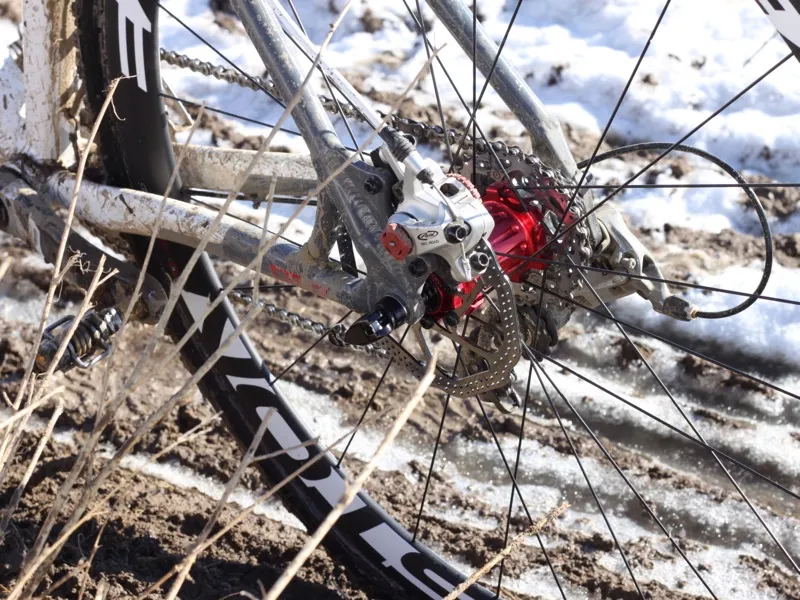
We rode our CruX with Avid's mechanical BB7 brakes
This softness is confined to the back of the bike, however. Up front, the S-Works-level FACT all-carbon fork is plenty stiff in steering yet doesn’t beat its rider up too badly. It sets a tone that the tapered head tube and manipulated mainframe follow, in terms of tracking and holding a line. Despite our criticism of the rear end, we enjoyed riding the CruX on all types of terrain, from slow, sloggy mud to ultra-technical mountain courses, due to its excellent handling.
The 'American' geometry is based around a generous 69mm of bottom bracket drop and slack 71.5° head angle. The BB drop keeps you on your toes in off-camber sections and would be tough to deal with on a mud-drenched European course (we estimate 8in and deeper ruts require timing your pedal stroke) but on technical and fast US courses we love the low center of gravity and stable handling. It makes the bike feel a little more forgiving when bunnyhopping and generally riding above your skill level.
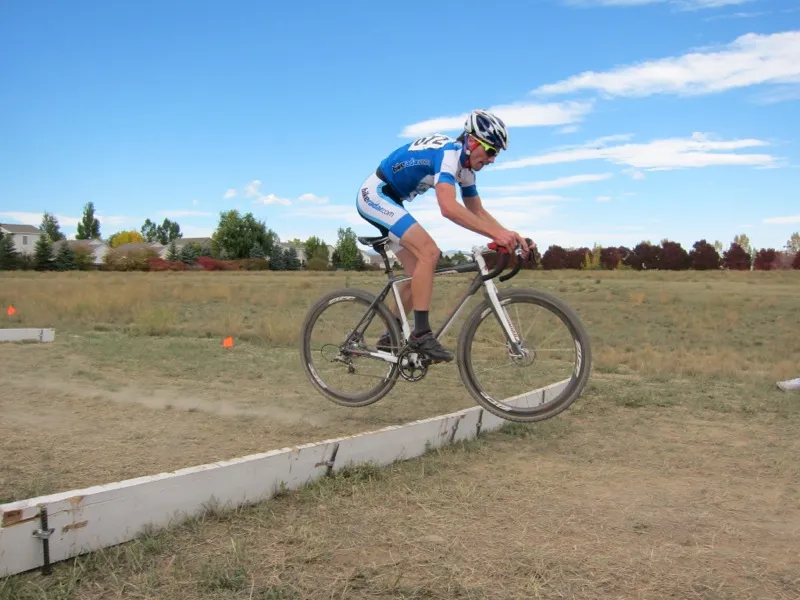
The CruX Disc inspires confidence and is an easy bike to bunnyhop
What about the discs?
We’ve only had three wet races this season and at the dry rounds the 18lb weight of the CruX Disc meant we paid a pretty hefty price. A similarly spec’d rim brake version would be 1.5 to 2lb lighter. On those three bad days, however, we wouldn’t have traded the control and confidence of our disc bike for 3lb of extra ‘dry’ weight, especially as less mud seemed to pack onto the disc frame. Even on some of the dry courses, particularly the bumpy, technical ones, we appreciated the discs more than the extra weight hampered us.
After spending a season on disc-equipped 'cross bikes, including the CruX and Van Dessel’s Gin & Trombones, our overall opinion is this: if you live in a wet climate and can only afford one bike, it’s got to be a disc model; those in dry climates will likely still be better served by cantilevers. Those able to afford two bikes in mixed climates should consider mixing their quiver with one disc and one cantilever bike, while those in wet climates like the US's Pacific Northwest, or say, Belgium, could go all-in with two disc bikes. For more on this, see our blog post, Disc brakes have a bright future in cyclo-cross.
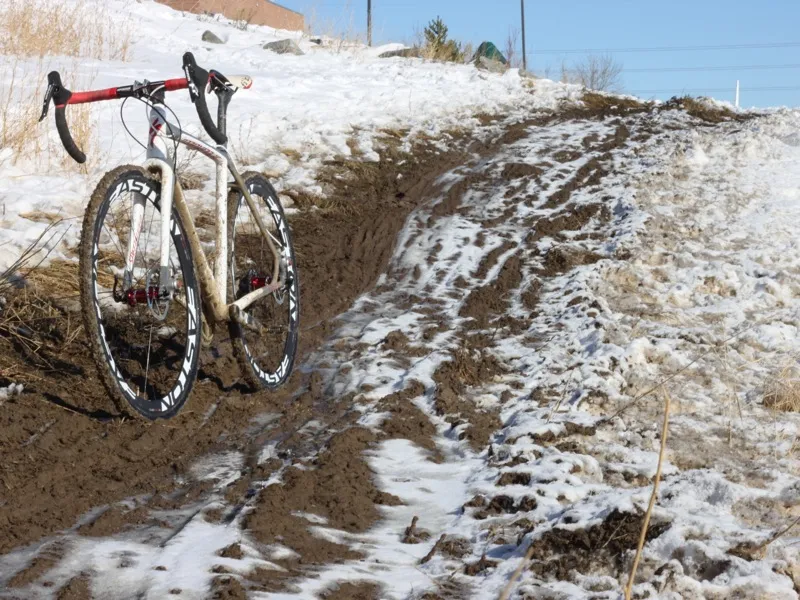
The CruX Disc loves mud
Frame: Slightly heavy in terms of weight and value
Our 54cm test frame weighs 3.43lb/1,559g with its seat collar and derailleur hanger, which is in the ballpark for a high-end alloy frame. Both the shaped tubing and smooth welds are very good quality, especially considering the sub-$1,000 pricetag. The CruX Disc is a heavy hitter in terms of value; there aren't many companies making bikes that are the same as their pros are currently winning on that can be had for less than a grand.
The internally routed cabling helps protect shifting in wet conditions but add considerable weight to the overall package – roughly 100g. The internally routed rear brake cable is a bit tougher to stomach because it makes it more complicated to run hydraulic lines, should a rider opt for TRP’s Parabox or those hydraulic 'cross brake systems rumored to available soon.
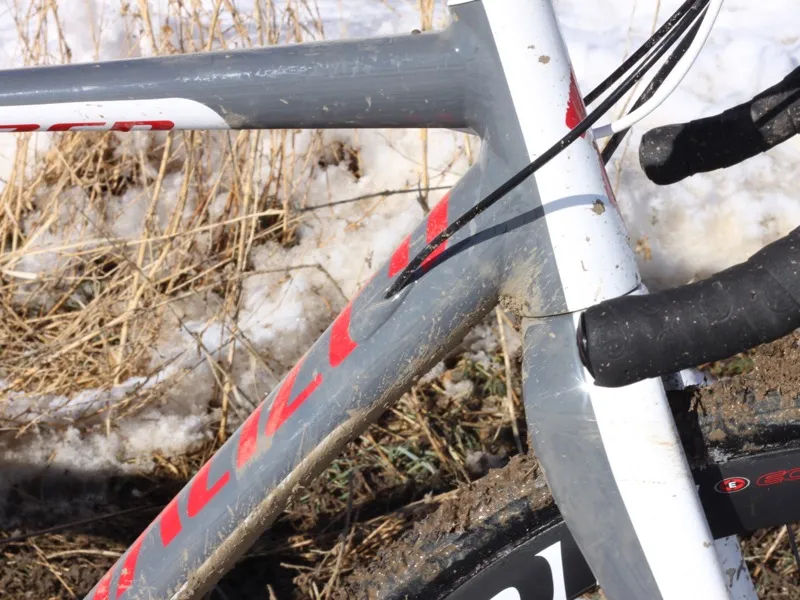
The CruX Disc uses full cable housing all around
The CruX Disc's rear end is spaced at 135mm, which we feel is the right choice for a disc equipped ’crosser. The mountain bike standard builds a stronger wheel than the traditional 130mm 'cross spacing, especially when you’ve got to fit a rotor in there, and some riders will already have a high-end 29er wheelset in their garage that can do double duty.
Part of the draw of the Specialized is its all-carbon fork, which sports post mount disc brake tabs – still a rarity on 'cross bikes, but likely to become the norm when all this shakes out. The mounts are spaced for a 140mm rotor; we didn't want for more power but 160mm discs can be used with an adaptor. The fork weighs 1.17lb/534g (uncut) and employs Specialized’s unique oversized high-set lower 1.5in bearing, which is said to better manage frontal impact forces. It complements the frame elegantly, creating a pro-worthy chassis.
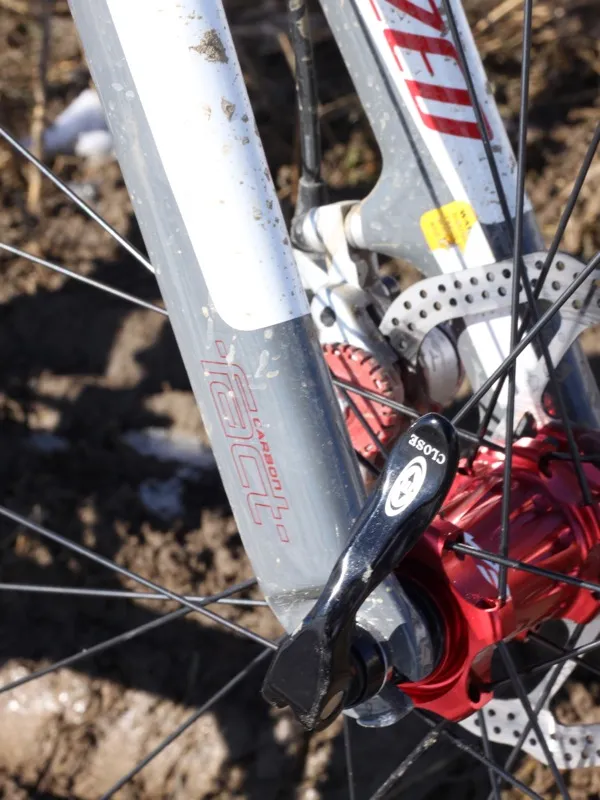
The fact that Specialized pitch the dropouts on the FACT carbon fork forward at roughly 30° to offset braking forces, and shows they've paid attention to the unique needs of a disc-equipped cyclo-cross bike
We built our CruX Disc frameset up with an FSA alloy cockpit, Easton EC90 carbon seatpost, SRAM Force group and Avid BB7 mechanical brakes. We rode three different wheelsets: an older set of Stan's NoTubes.com ZTR 355 tubeless 29er wheels, and custom Zipp and Easton tubulars. The Stan’s wheelset was the lightest and cheapest of the three but gave up performance in the areas of comfort and traction. The bike hovered around 18lb/8.2kg regardless of the wheel configuration.
